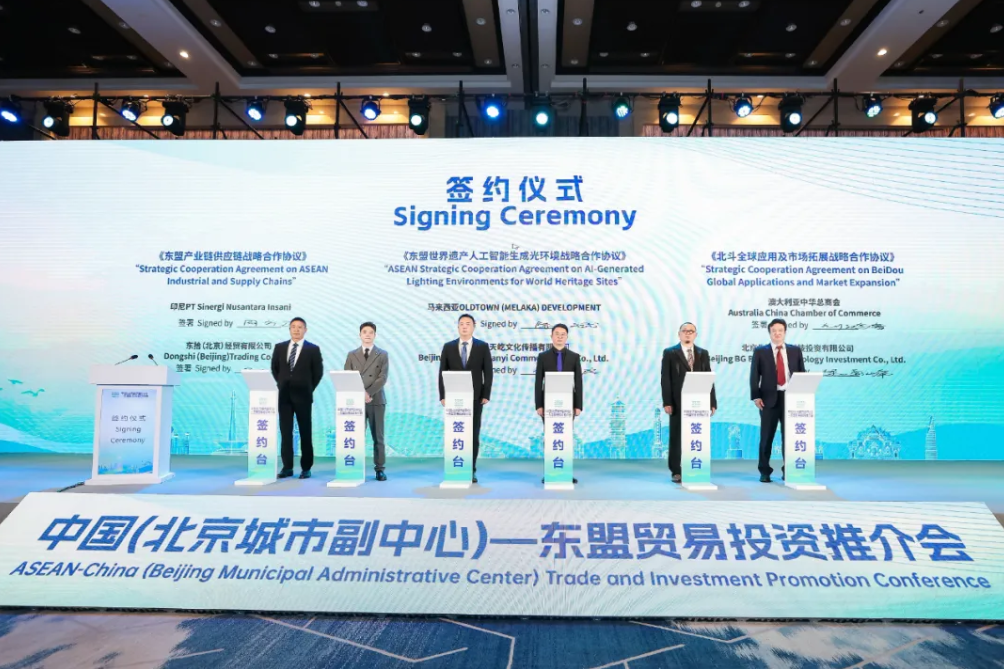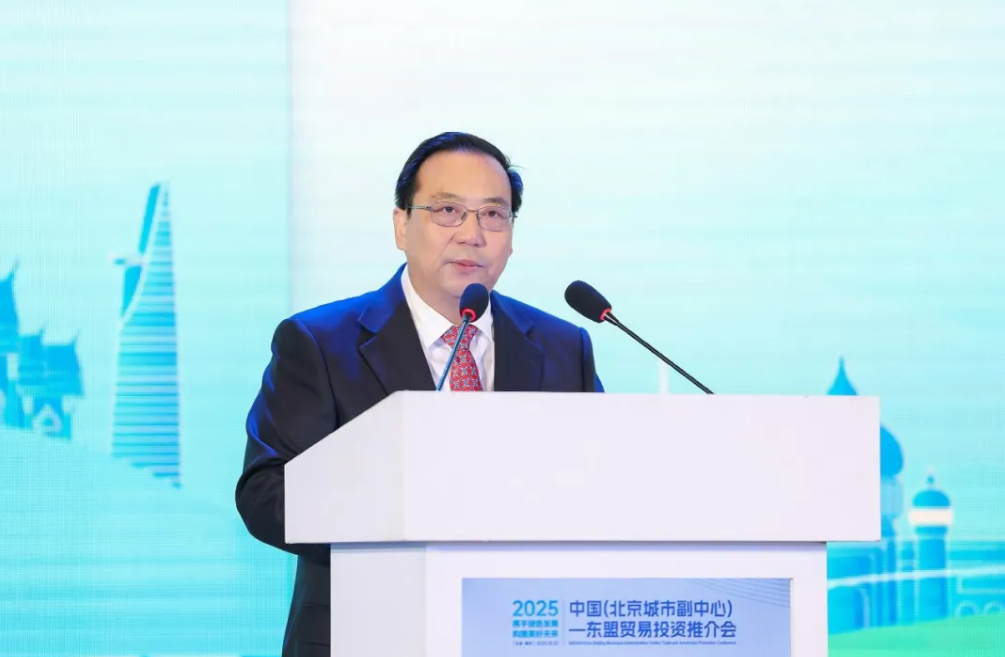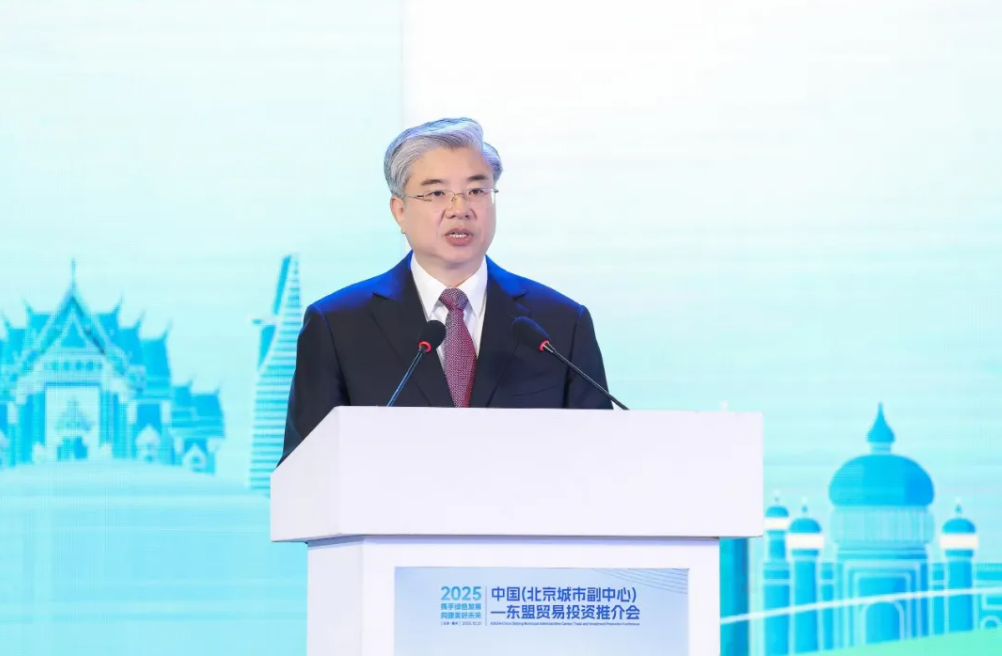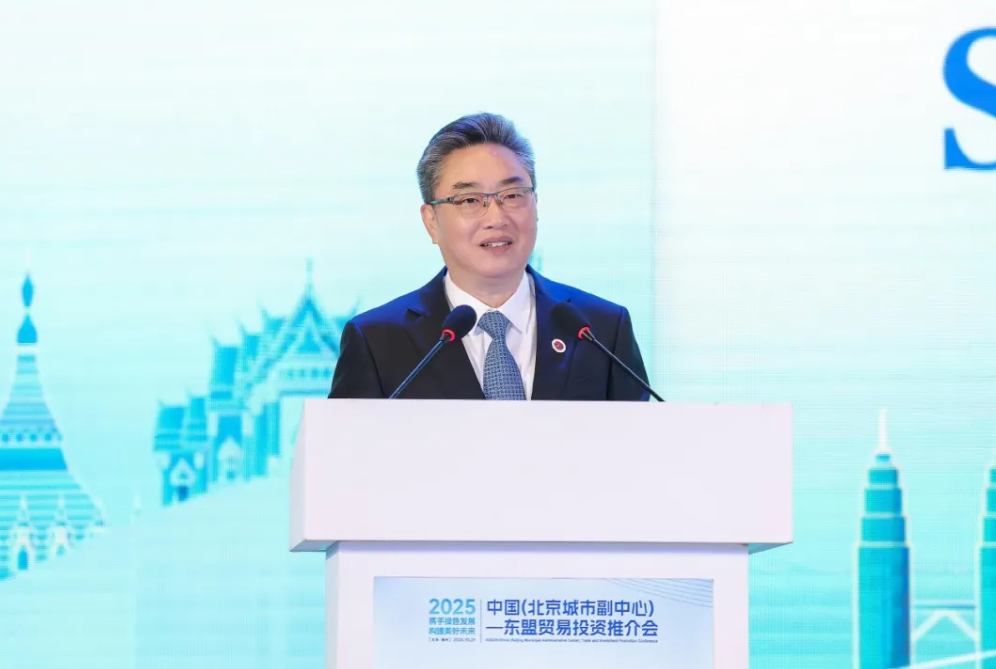CICG hosts ASEAN-China trade conference in Beijing's sub-center

The ASEAN-China (Beijing Municipal Administration Center) Trade and Investment Promotion Conference is held in Beijing's Tongzhou district, Oct. 21, 2025. [Photo/CICG]
The ASEAN-China (Beijing Municipal Administration Center) Trade and Investment Promotion Conference was held on Tuesday in Tongzhou district, Beijing.
Focusing on joint efforts in green development, the event cemented the role of Tongzhou district, also known as Beijing's sub-center, as a hub for China–ASEAN green cooperation, and injected new momentum into regional economic collaboration and sustainable growth.

Chang Bo, president of China International Communications Group (CICG), delivers a speech at the ASEAN-China (Beijing Municipal Administration Center) Trade and Investment Promotion Conference in Beijing's Tongzhou district, Oct. 21, 2025. [Photo/CICG]
Chang Bo, president of China International Communications Group (CICG), said China and ASEAN are the world's second- and fifth-largest economies, and they have been each other's top trading partners for five consecutive years, while serving as a model of regional economic cooperation. He called for increasing strategic alignment, advancing green development, and promoting open and inclusive multilateral cooperation.

Beijing Vice Mayor Tang Wenhong delivers a speech at the ASEAN-China (Beijing Municipal Administration Center) Trade and Investment Promotion Conference in Beijing's Tongzhou district, Oct. 21, 2025. [Photo/CICG]
Beijing Vice Mayor Tang Wenhong noted that the Beijing's sub-center, a key area for coordinated development of the Beijing-Tianjin-Hebei region, is emerging as a national model for green growth.
The sub-center benefits from policy advantages of the free trade pilot zone and the national demonstration zone for expanding the service industry. It hosts 13 national-level green factories and a green energy fund worth tens of billions of yuan, while accelerating the upgrade of its national green exchange.
The district aims to deepen industrial cooperation with ASEAN in new energy and environmental protection and jointly build green industrial and supply chains, Tang said.

ASEAN-China Centre Secretary-General Shi Zhongjun delivers a speech at the ASEAN-China (Beijing Municipal Administration Center) Trade and Investment Promotion Conference in Beijing's Tongzhou district, Oct. 21, 2025. [Photo/CICG]
ASEAN-China Centre Secretary-General Shi Zhongjun emphasized that the inclusion of green economy content in the Version 3.0 China-ASEAN Free Trade Area (CAFTA) framework provides an institutional foundation for future cooperation in green trade, investment, and standards. He urged both sides to remove green trade barriers and promote the flow of quality technologies and products.
During the event, the China–ASEAN Industrial Chain and Supply Chain Cooperation Fund was launched to support projects in green manufacturing and cross-border logistics.
In addition, three enterprises from Beijing's Tongzhou district signed cooperation deals with partners from Indonesia, Malaysia, and the China Chamber of Commerce in Australia. The agreements cover green agricultural trade, culture-tourism projects, and smart energy monitoring.
Meanwhile, the Center for Asia-Pacific of the CICG and the Beijing National Institute of ESG launched a joint program to highlight China–ASEAN cooperation on green enterprise development.
Besides, a discussion session on green development featured insights from experts on topics including green finance, ESG practices, and carbon market progress. Enterprise matchmaking sessions also took place around green development, AI, and industrial and supply chains, leading to preliminary cooperation agreements in areas such as photovoltaic exports, cross-border e-commerce, and low-carbon R&D.


